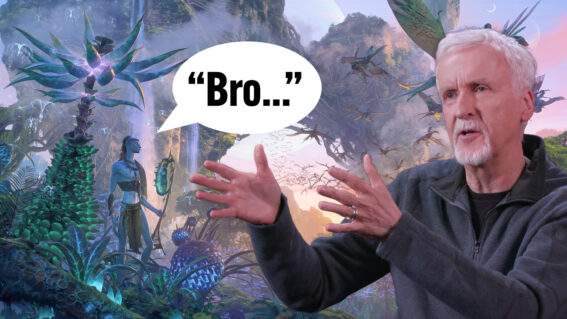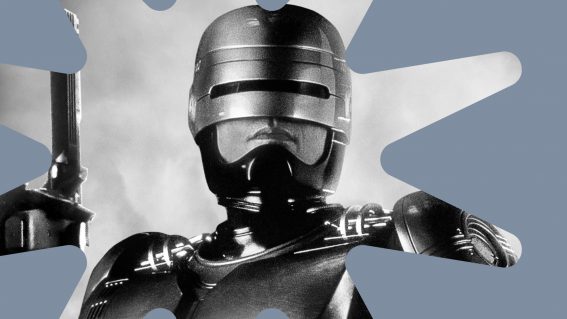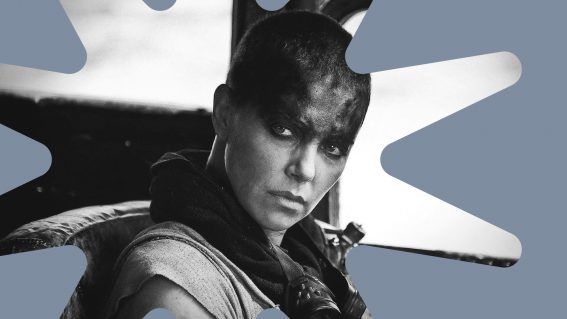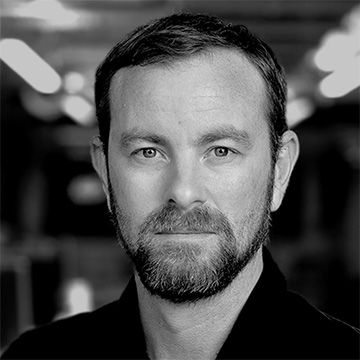Retrospective: the explosively stupid Waterworld is now finally relevant
Legendarily strange, problematic and overblown, Waterworld is one of the craziest 90s blockbusters.
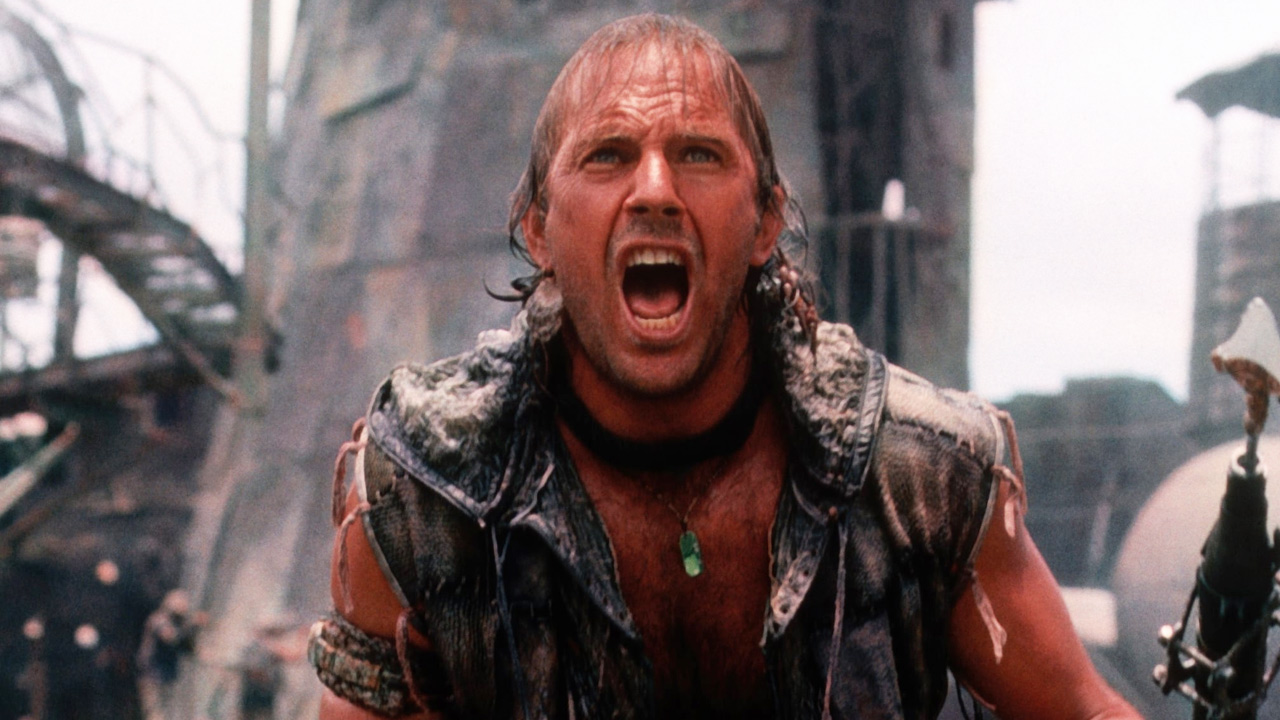
Is Waterworld the most spectacularly soggy blockbuster ever made? Luke Buckmaster revisits this legendarily weird movie, set in a climate change-ravaged future world and starring Kevin Costner as a part-human part-fish.
I wouldn’t feel right describing the 1995 blockbuster Waterworld as “ahead of its time,” that oft-used phrase implying a degree of intellectual nous and soothsaying. It’s an explosively stupid, spectacularly soggy affair ultimately saved by its “I can’t believe they did that!” audacity. Including and specially with relation to casting Kevin Costner as a man-fish anti-hero: the ancient lone warrior reincarnated using the gene pool of human-like amphibians, a la Abe Sapien and Amphibian Man. But director Kevin Reynolds does achieve a prophetic veneer, presenting a gone-to-the-dogs dystopian future the world seems to be barrelling towards rather than away from.
In 2023, the most obvious way to view this infamously expensive production is through the prism of the climate crisis, its vision of an earth submerged by rising sea levels now more plausible than ever. Just a few days after rewatching Waterworld I read a BBC news report on melting sea-ice that contains words you never want to hear from scientists—including “mind-blowing” and “we never thought.” Global warming and rising sea levels have been occurring for a long time, but it’s clear we’re in a different era now. Waterworld has finally become culturally relevant.
The film’s first words are delivered by a narrator introducing a future where “the polar ice caps have melted, covering the earth with water.” It’s a lazy context-setting preamble, from a voice never heard again, paired with a small but expectation-subverting visual flourish. We see the studio’s obligatory brand spot: a globe spinning with the word “UNIVERSAL” wrapped around it in gold letters. And then, something odd: the word disappears but the globe remains, almost like the film has failed to load. In an unbroken shot the virtual camera crawls towards the earth, showing land disappearing and water spreading, condensing many years into seconds.
And then…Kevin Costner drinks his own piss! This is famously the first action undertaken by our fishy protagonist—who has gills behind his ears—while cruising around on an odd looking trimaran. Many have commented on this moment, but most don’t mention that, before drinking his piss, Costner’s “The Mariner” pours it into a funnel and filters it using a device with a hand-operated pump. He turns on a tap and voilà, yellow urine comes out as clean water. This is a modest but effective approach to worldbuilding: a single person and a single action, conveying significant information about the narrative universe without putting it in highlighter pen.
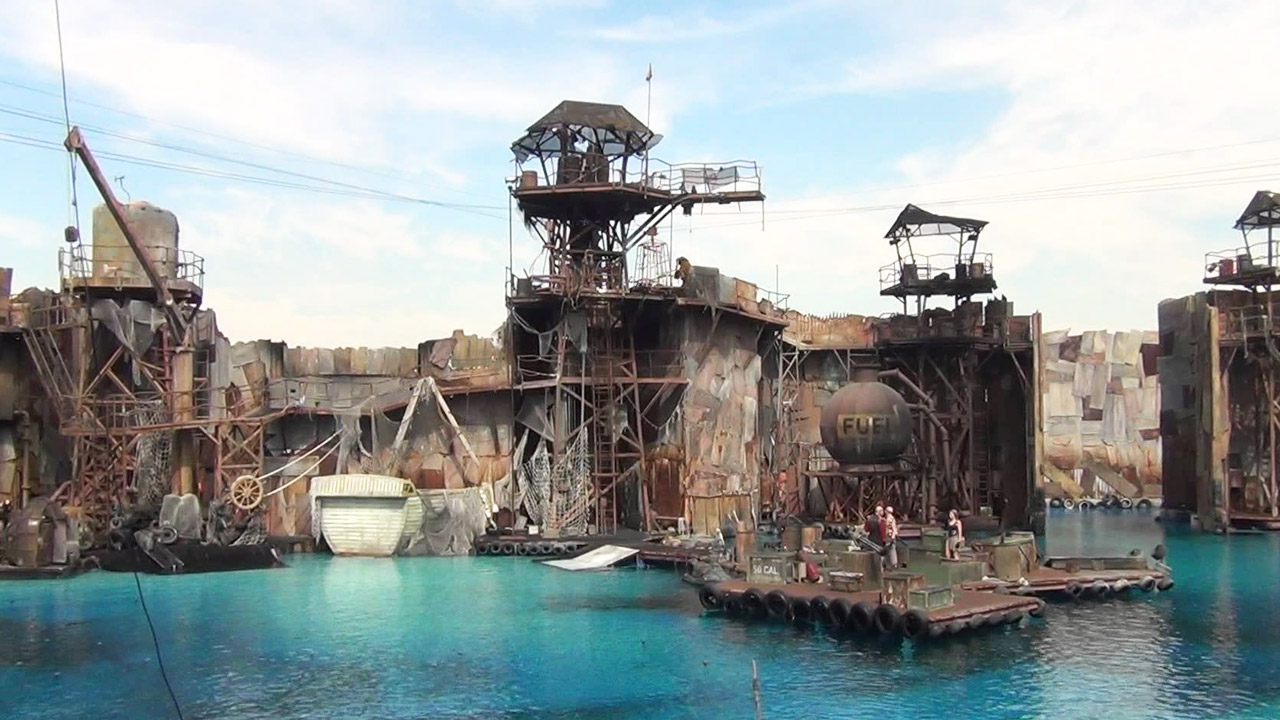
On board The Mariner’s vessel is a small plant, which is a prized possession—like the greenery carried by the Keeper of the Seeds in Mad Max: Fury Road. Speaking of Mad Max: Waterworld is a rip-off. I’m not the first to point out that this film is The Road Warrior on water. Mad Max director George Miller memorably described his dystopian classics as taking place “next Wednesday,” after bad things you read about in the news have come to pass. Waterworld transpires later in the week. Saturday, maybe.
There’s a patina of hope in this world: a rumoured place called “Dryland.” It might not sound utopian, but both parts of that squished together word connote experiences alien to the seafaring sods in this universe. The Mariner encounters a little girl named Enola (Tina Majorino) who has a map to Dryland tattooed on her back. The villain—Dennis Hopper’s “The Deacon”— wants them thar map on them thar back. He bursts upon the scene 20 minutes in, on an incredible steampunkian vehicle, tearing across the water like a bulldozer, perched on a throne at the back of it. The Deacon’s a tyrannical, tub-thumping despot, a long lost relative of Immortan Joe, a grenade with the pin pulled. Mind you, that could be said about many of Hopper’s characters.
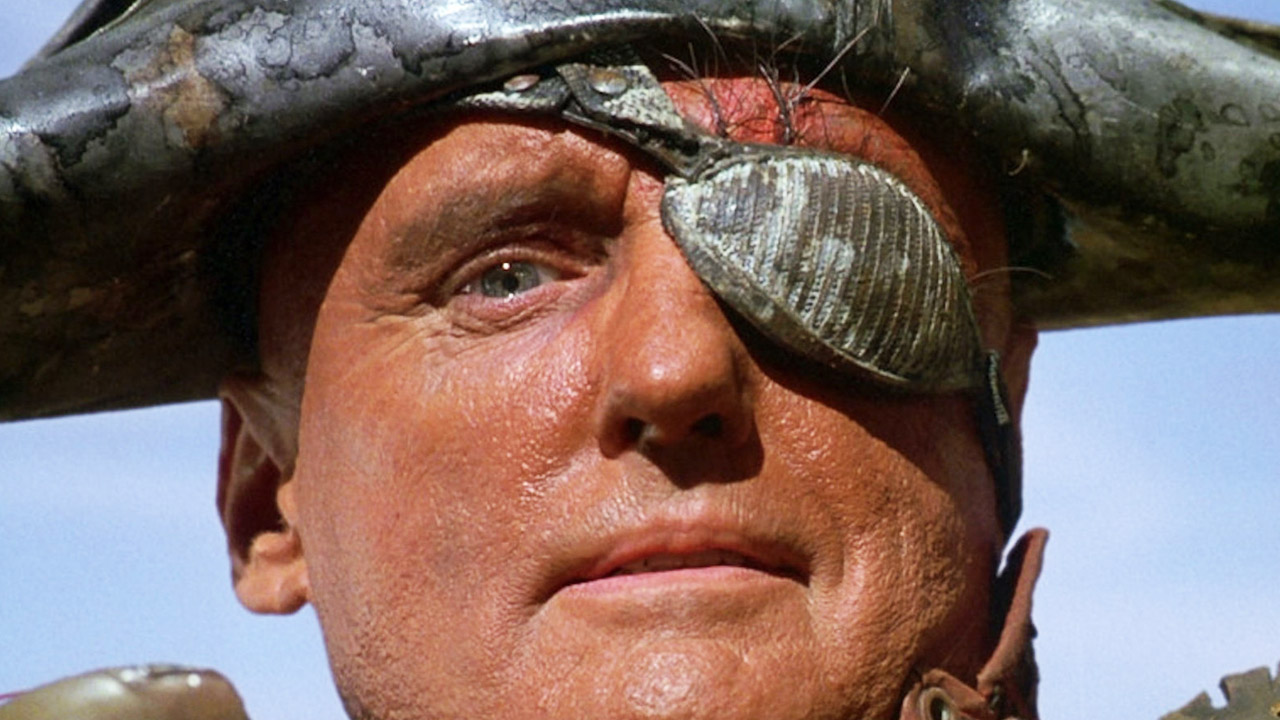
In one scene we witness The Deacon working his magic, as a false prophet or serial shit-spinner, imploring his impoverished followers to keep the faith. “Citizens of the good ship…I’ve had a vision,” he begins, lit cigarette in one hand, bottle of Jack Daniels in the other. He talks about the map, the girl, the Dryland. This is a rare moment when you can feel the drama starting to pop, the film throwing something around you weren’t expecting.
But Reynolds doesn’t seem to understand its potential, clipping this moment while including many others that could’ve been reduced or removed entirely, without anybody noticing. It’s not implausible that the director wanted to flesh it out but Costner wouldn’t let him. Reynolds fell out with the star and eventually quit the production. Before Waterworld opened, he famously told Entertainment Weekly that “in the future, Costner should only appear in pictures he directs himself. That way, he can always be working with his favourite actor and his favourite director.”
You might’ve heard the expression “cigar-chomping villain.” That line describes guys like The Deacon, so hardcore they need to express their toughness via a phallic object dangling from their lips. Cigar-chomping villains are aggressive, unyielding, full-on. Waterworld is a cigar-chewing film. There’s evidence of it everywhere, from a protagonist who suggests throwing the little girl overboard (to conserve resources) to lines such as “he’s like a turd that won’t flush.”
Maybe the film itself is a turd that won’t flush. Many words have been written about how it supposedly bombed, like a you-know-what exploding in a person’s face. But in fact it became profitable and has stuck to the zeitgeist pretty well, like mud to a blanket. Its sheer oddity will keep it a pop culture curio as the years roll by.













